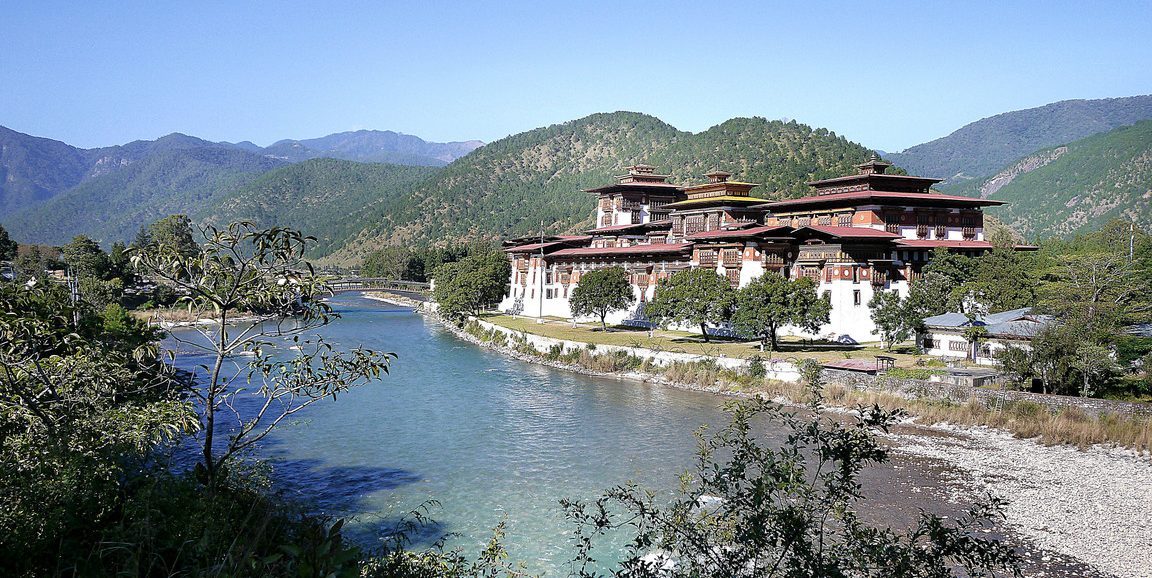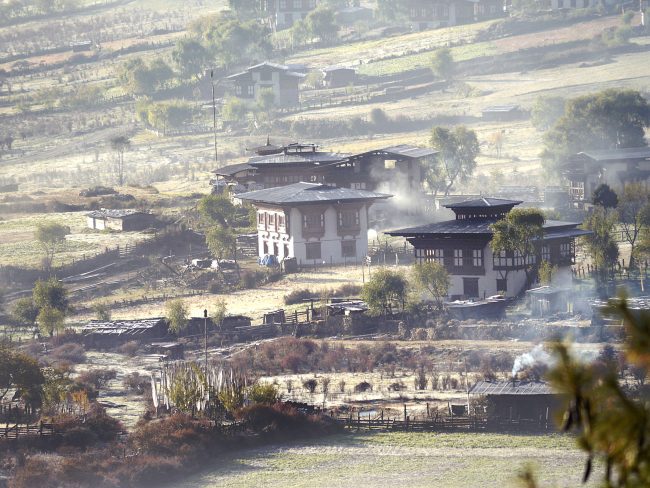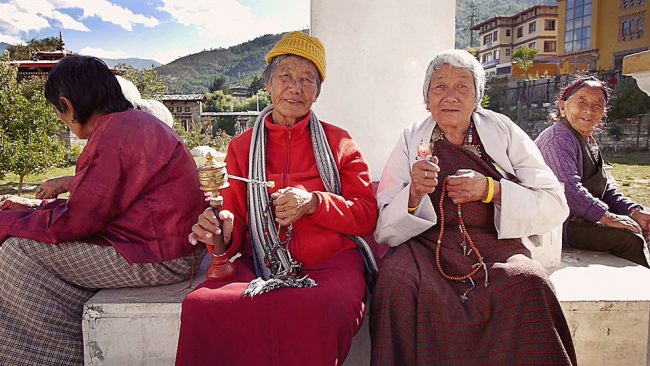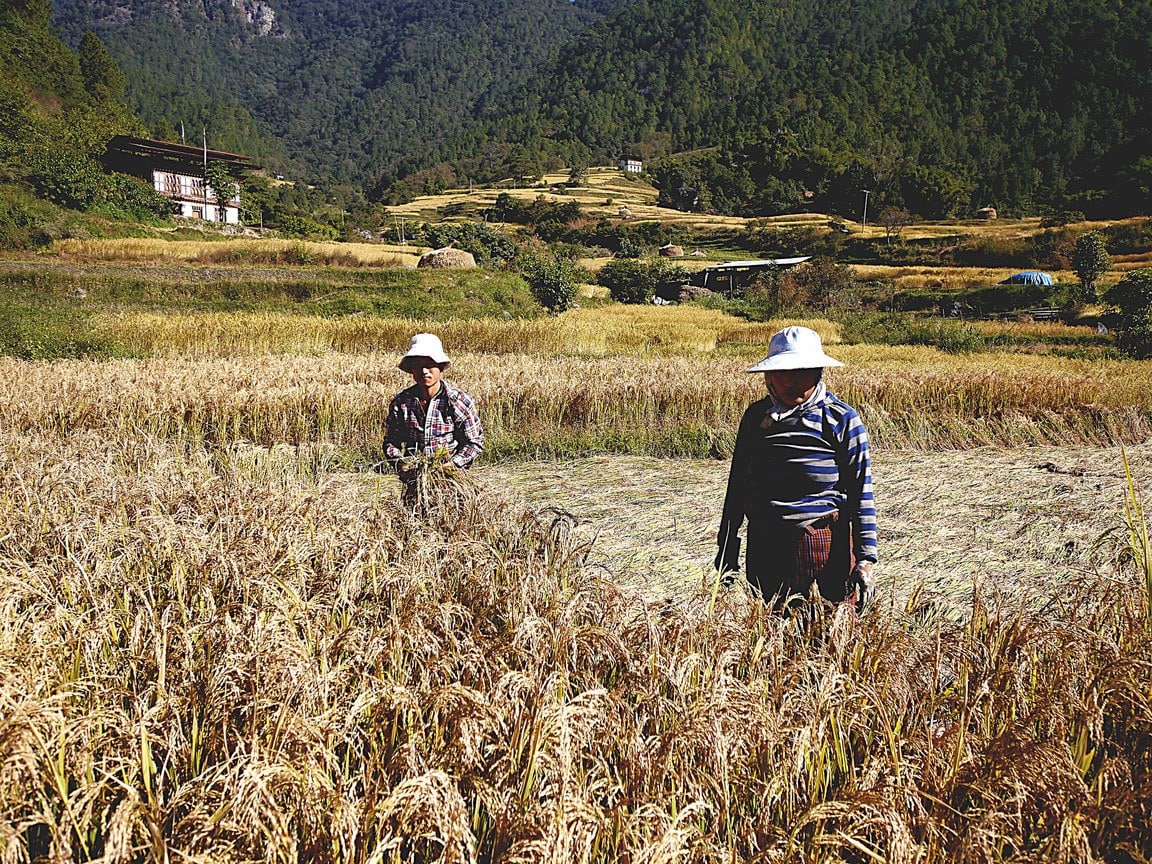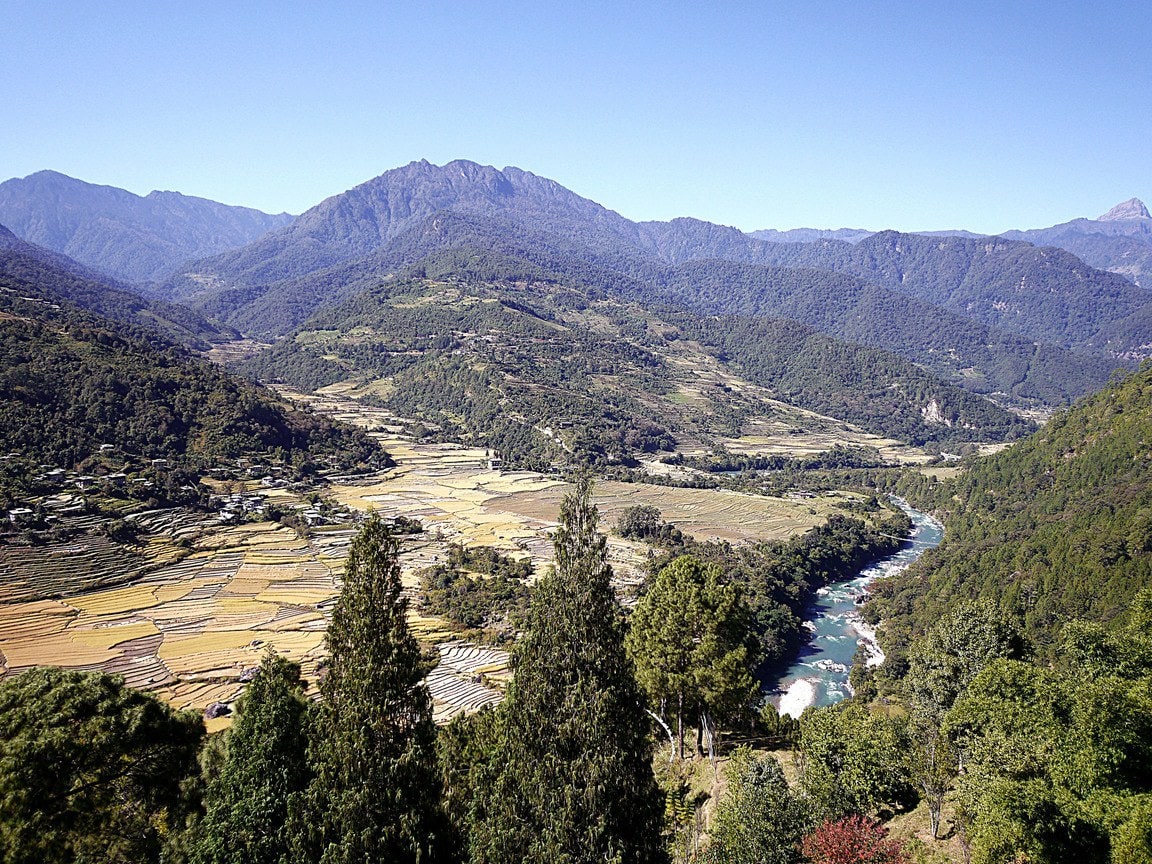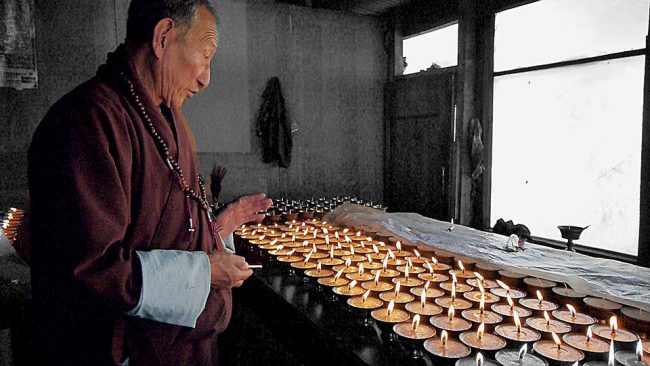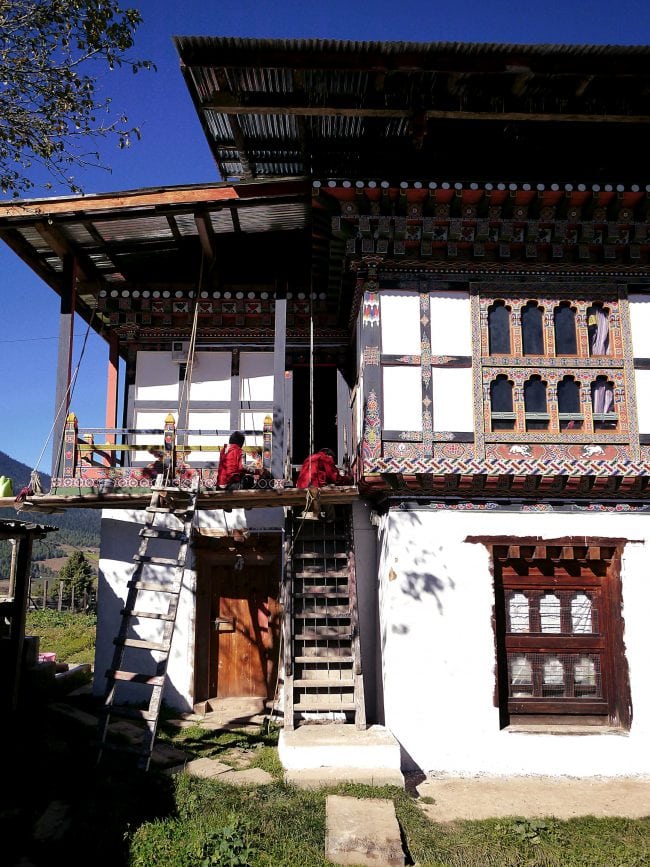Bhutan is a captivating and mystical country not accessible to everyone. It’s minimum daily package fee and its remoteness make the Land of the Thunder Dragon a rather closed up country. Here is a journal with the best photos of Bhutan from my trip through the Himalayan Kingdom.
1. Punakha Dzong
One of the most beautiful Dzongs, or fortresses, in Bhutan is the one in Punakha, a fine example of Bhutanese architecture, known for constructing buildings and complex structures without any nails or iron, simply leveraging the rules of nature.
2. Rice fields
Unexpectedly, visitors to Bhutan may be surprised to know that the country’s elevation ranges from near sea level in the south to over 7,500 meters in the Himalayan north. Punakha, about a 4h drive from Paro, enjoys tropical weather and with that, tropical fruits and vegetables that are surprising to find in Bhutan such as mango, papaya, passion fruit or rice paddies, a staple in the country and an essential ingredient in the local diet. In Autumn, the rice is cut and stored in piles which are then threshed in the winter when families are ready to eat it. As opposed to other countries in Asia, rice fields in Bhutan turn to yellow when the leaves change colour.
3. Suspension bridges
Bhutan is criss-crossed by rivers and valleys and many of them can only be crossed via suspension bridges. Most of them are interlocked with dozens of prayer flags.
4. Chillies galore
Bhutan’s national dish is chilli and cheese which is literally made of these two ingredients chopped and mixed together. Bhutanese could live with just chilli and the fiery ingredient features in every dish. At the weekend market in Punakha, local farmers sell their produce to the valley’s population.
5. Temple paintings
A rare look into the paintings and decorations inside Gangtey’s Monastery illustrates the level of intricacy, the amount of gold and the devotion of Bhutanese to Buddhism. The walls of most temples, monasteries and Dzongs are covered with layers of colourful paint, particularly gold and yellow, including ceilings and floors, and decorated with prayer flags, donations, statues of deities, offerings and other ornaments in what is an explosion of colour.
6. Gangtey’s valley
As the fog descends and gets dissolved by the warming sun, Bhutan’s Valleys turn from grey to green, chimneys start to cough smoke and the morning frost melts into sparkling water that reflects the sun rays in a kaleidoscope of colours.
7. Tiger’s Nest
Bhutan’s most famous sight and holiest temple, Tiger’s Nest, is a good 2-3h 900m trek uphill that culminates with 700 stairs – but it’s worth every drop of sweat. The views along the way are beautiful but it is the mysticism of the mountain and the temple that brings peace and magic to the visitor.
8. Elderly women
The elderly Bhutanese men and women spend their last years praying for their next reincarnation and for their loved ones and all living beings. They spend hours every day walking around stupas clockwise, turning prayer wheels or small handheld ones while reciting mantras.
9. Bhutanese Himalayas
Bhutan has several peaks above the 7,000m mark, however, most of them have never been climbed. It is believed that mountains above 7,000m are holy and should not be attempted. But, a few were in the past, though mostly unsuccessful. The majority of this part of the world is unmapped so heights are only approximate.
10. Prayer wheels
Prayer wheels are a common sight across Bhutan. The country is filled with prayer wheels of all sizes. Their insides are filled with mantras rolled in the inner axis. The larger the wheel the higher the amount of mantras. Spinning one of the large ones is equivalent to reciting all the mantras that are rolled inside.
11. Monks in prayer
Bhutanese monks are not seen in the streets or public spaces. It is believed that a good monk should spend most of his or her time praying and reciting mantras and should therefore stay in the monasteries, away from civilisation and distractions. It is for this reason that most monasteries are found high up in the mountains and are of difficult access.
12. Bhutanese farmers
Bhutan is primarily an agrarian society where most of the population works in tourism or agriculture. As the country is mostly isolated from the rest of the world and values Gross National Happiness in detriment of senseless development, most of the farmers still work the land with the help of animals and using simple tools, like a hand sickle, to cut the rice stalks.
13. Valleys and civilisation
As a mountainous country with 72% forest coverage, agricultural land in Bhutan is scarce and population congregates in the major valleys. All of the country’s cities and most of its population inhabit these lower valleys where land is flatter and crops can be grown. It is in these valleys where streams and rivers from mountain ice melting flow.
14. Blessings, prayers and offerings
Bhutanese are eminently Buddhist and strong believers in the purest form of Buddhism, particularly Tantric Buddhism. Praying, spinning prayer wheels, making offerings to Gods, getting blessed by monks, lighting butter lamps and many other Bon (animist) and Buddhist practices are common for most Bhutanese. Lighting 108 butter lamps has a special meaning as the number is auspicious.
15. Books on walls
As reading and writing was reserved for monks and religious men, most laymen used to get their teachings from paintings on the walls of temples and monasteries as well as Thankas. The walls of most temples are covered with legends, teachings and the lives of famous Gods. Buddhism key building blocks are also represented including the astrologers’ wheel or the cycle of life and reincarnation. The paintings are beautifully painted in bright colours.
16. Intricate architecture
Almost all buildings, including private homes, in Bhutan are designed and built with intricate roofs and window frames painted and carved delicately. Houses are usually made of two storeys with an attic for the vegetables and food to be stored. The first storey is very high and can be accessed through very steep wooden staircases. Like temples and monasteries, houses are not built with the help of any nails of metal.
17. Phallus worshipping
Bhutanese worship the phallus. It is believed to represent fertility and also fortune and good luck and it is painted on walls, hanged on amulets around children or cattle’s necks and erected above door frames and on top of houses.
- Check if you need a visa, get help processing it at iVisa.
- Never ever leave without travel insurance. Get affordable coverage from World Nomads or long term insurance from Safety Wing.
- I find all of my flights on KAYAK. Check their Deals section too.
- Search for all your transportation between destinations on the trusted travel booking platform Bookaway.
- I book all my day trips and tours via GetYourGuide, they are the best and their tours are refundable up to 24h in advance.
- Get USD35 off your first booking with Airbnb.
- Compare hotels EVERYWHERE at HotelsCombined and book with Booking.com.
- Compare car rental prices at Rentalcars.com

